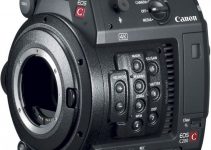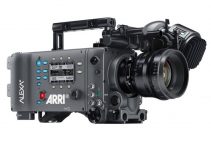Utilizing timecode for synchronizing to merge separate video and audio files in post production can be an extremely efficient and time-saving method for every professional production, especially when it’s applied correctly. Having a basic understanding of timecode has become an essential part of the workflow for both studio and field productions for many years.
The basic principals of the method are simple, straightforward and easy to get familiar with. In general Time Code, or TC as it’s commonly abbreviated, is a series of numbers generated in a controlled sequence by a timing system whether it’s integrated with a video, audio or any other type of device. In video productions, in particular, a time code can be added to a recording to facilitate synchronization, file organizing and searching and more.
The following video covers the basics of timecode and multi-device synchronization with audio and video recording devices.
A standard time code is usually displayed in the following format: HH: MM: SS: FF (the hour, minutes, seconds and frame values). The first three numbers are the same as standard clock time, so they have maximum values of 23, 59 and 59 respectively. The last number counts the number of video frames where its maximum value depends on the frame rate mode of the video system.
Time code can be overlaid on a video image as pictured right, or it can be hidden as data only. In either case, every single frame of the video is marked with a unique time code number.
The TC signal coming out of a time code capable audio or video recorder can be easily synchronized so that the TC values are identical on each device. The devices can be either tethered or can be synchronized and running independently. The process of synchronizing of two or more devices that are not connected is also known as “Jam Syncing.” That’s the main reason for two or more precision TC enabled devices which have been jam-synced will maintain timecode sync to ensure matching timecode values.
TC drift is the rate at which two-time code values slowly become different. The more stable the time code clock is, the longer the clocks can run separately in sync. Periodic re-jamming or re-syncing of either time code devices is highly recommended.
There are also different TC modes utilized in various production scenarios. In Free Run mode, for example, the device is outputting time code signal regardless if the device is in standby mode or recording, whereas the Record Run Timecode Mode outputs forward running time code values only when the device is recording.
There is also an External Timecode Mode where an external timecode source is required. This mode can be utilised to bypass a lower quality internal timecode circuitry by replacing it with the timecode signal generated by the higher precision timecode device.
In an External TC Auto Rec Mode, timecode signal is used to initiate automatically or stop recording from the Master to the Slave device. The latter mode is widely used in situations to trigger remotely a recorder from a Rec Run TC enabled device. Utilizing a Genlock or sending a reference video signal to all devices is a common practice that generally cause all devices to run precisely in sync.
Keeping your timecode enabled devices in sync should provide you a seamless and effortless merging of audio and video files later in post. However, having your well-trusted clapper board with you on set is almost mandatory. Thus, you’ll be sure that whatever may happen you will be able to bring your images and sound together in sync once shooting is completed.
Disclaimer: As an Amazon Associate partner and participant in B&H and Adorama Affiliate programmes, we earn a small comission from each purchase made through the affiliate links listed above at no additional cost to you.
Claim your copy of DAVINCI RESOLVE - SIMPLIFIED COURSE with 50% off! Get Instant Access!





Very good article, thanks.
You’re welcome, Eno! Thanks!